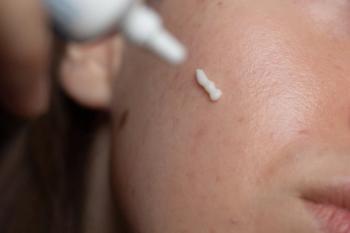
AD and AA Severely Impact Mental Health and Daily Life
Key Takeaways
- AD and AA share immune-mediated mechanisms, with AD patients having a 26-fold increased risk of AA, highlighting shared pathogenic pathways.
- Both conditions significantly impair quality of life, affecting sleep, mental health, and social relationships, with high rates of anxiety and depression.
Explore the significant mental health and socioeconomic impacts of atopic dermatitis and alopecia areata, revealing urgent needs for better support and awareness.
Recent research has highlighted the profound and multifaceted impact of 2 prevalent chronic inflammatory conditions: atopic dermatitis (AD) and alopecia areata (AA).1 Although pathophysiologically distinct, both diseases are driven by immune-mediated mechanisms and exhibit complex, unpredictable courses with substantial implications for patient well-being, health care systems, and broader socioeconomic structures.2-4
Background
Although AD primarily affects children, it can persist or manifest in adulthood, making it recognized as the most common inflammatory skin disorder globally. AA, on the other hand, results in nonscarring hair loss on the scalp, face, or body and occurs in both sexes at any age. Emerging evidence suggests that these conditions frequently coexist, sharing inflammatory pathways and overlapping comorbidities.
Results
The multicenter retrospective study revealed a striking 26-fold increased risk of AA in individuals with AD compared with healthy controls, with approximately 16% of adults with AD also experiencing AA. This comorbidity underscores a critical intersection in dermatologic and immunologic research, pointing to potential shared pathogenic mechanisms involving T-cell dysregulation and barrier dysfunction.
Beyond their physical manifestations, both AD and AA significantly compromise patients' quality of life (QOL). The burden extends far beyond visible symptoms, affecting sleep, mental health, social relationships, and daily functioning. In children, AD is associated with frequent sleep disruptions and social withdrawal, often due to bullying or physical discomfort. A UK study involving nearly 5000 children with AD found nearly 50% higher odds of sleep disturbances, particularly in those with concurrent allergic conditions.
Adults report similarly debilitating effects. Recent data from Ireland revealed that more than 70% of adults with AD suffer from social anxiety, 52% avoid intimacy, and nearly half report depression. Comparable trends are seen in patients with AA. Japanese studies using the SF-36v2 health survey reported significantly lower scores in patients with AA, particularly in mental health and social functioning domains. Regression analyses showed that disease severity, comorbidities, and depression were key predictors of diminished QOL.
Importantly, the psychological toll of these diseases is consistent across geographies. More than 30% of patients with AD and AA worldwide report clinical symptoms of anxiety and depression—figures substantially higher than those observed in the general population. Sleep deprivation, which is commonly reported in AD, exacerbates stress and cognitive decline, perpetuating disease flares and psychological distress.
Recent research also sheds light on the financial burden borne by patients. Out-of-pocket expenses, which include over-the-counter treatments, alternative therapies, and cosmetic products, are substantial. For AD, annual individual costs can exceed €900, with emollients and moisturizers representing the highest ongoing expense. In AA, cosmetic camouflage—including wigs and makeup—represents a major cost driver, with global median annual spending surpassing €1200 in some studies.
Furthermore, these diseases contribute significantly to indirect costs such as work absenteeism and presenteeism. A European study found that adults with severe AD lose nearly 19 hours of productivity per week. In Taiwan, work impairment was 2.6 times greater in individuals with severe AD compared with those with milder forms. AA shows similar trends, especially in recently diagnosed patients, who report higher rates of work absence and reduced effectiveness.
Health care utilization is markedly elevated among patients with AD and AA. Recent US data show that adults with AD incur nearly $5000 (€4558) more annually in health care costs compared with healthy controls, primarily due to outpatient visits and pharmacy expenditures. Patients with AA also report significantly higher health care spending, with increased prescription drug use—particularly immunologic agents—driving the difference.
Conclusion
Recent research paints a clear picture: Although AD and AA are nonfatal, their cumulative impact on physical health, psychological well-being, and economic stability is substantial. The interconnected nature of their burdens—spanning personal, familial, and societal domains—demands a comprehensive, multistakeholder response. This includes not only improved medical management but also policies aimed at mitigating financial strain, enhancing mental health support, and broadening public awareness. As evidence continues to accumulate, it becomes increasingly clear that these conditions merit greater prioritization in both clinical practice and health care policy.
References
- Stevanovic K, Pereira M, Nguyen O, van Hofman I, Meesch C, Zuberbier T. 20 years of the socioeconomic impact of atopic dermatitis and alopecia areata from around the globe. Clin Transl Allergy. 2025;15(5):e70061. doi:10.1002/clt2.70061
- Christensen RE, Jafferany M. Psychiatric and psychologic aspects of chronic skin diseases. Clin Dermatol. 2023;41(1):75-81. doi:10.1016/j.clindermatol.2023.03.006
- Murray G, O'Kane M, Watson R, Tobin AM. Psychosocial burden and out-of-pocket costs in patients with atopic dermatitis in Ireland. Clin Exp Dermatol. 2021;46(1):157-161. doi:10.1111/ced.14422
- Zuberbier T, Lötvall J, Simoens S, Subramanian SV, Church MK. Economic burden of inadequate management of allergic diseases in the European Union: a GA(2) LEN review. Allergy. 2014;69(10):1275-1279. doi:10.1111/all.12470
Newsletter
Like what you’re reading? Subscribe to Dermatology Times for weekly updates on therapies, innovations, and real-world practice tips.


















